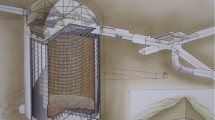Abstract.
It is well known that measuring cross-sections of thermonuclear reactions at the low energies typical of astrophysical sites is very difficult. This is due to the presence of the Coulomb barrier between the interacting nuclei. For non-explosive scenarios at astrophysical sites, the relevant energies typically span from few tens to few hundreds of keV while the Coulomb barrier is in the order of MeV. The fusion processes then proceed via tunnel effect and their cross-sections are strongly depending on the probability of penetration through the barrier. In a first approximation, this probability is given by the Gamow factor. Owing to the exponential decrease in this factor with energy, the cross-section values of thermonuclear fusion processes in stellar systems often reach values as small as micro- and nanobarn and even lower ones. Neutron-induced reactions, in spite of the absence of Coulomb barrier, are also difficult to measure. Indeed, it is the possible presence of a centrifugal barrier that can hinder the measurement of the values of the cross-sections of these processes. In either cases the cross-sections of astrophysical nuclear processes result in experimental difficulties, due to the low signal-to-noise ratio, that have been a challenge for scientists since the setting of this scientific field: Nuclear Astrophysics. In the last two to three decades, experimental improvements, including the construction of underground laboratories, allowed for the first time the measurement of cross-sections of astrophysical nuclear processes in the relevant energy region for astrophysics. Also, indirect methods were developed. As a general and common feature, using these methods it is possible to relate the features --typically the cross-section-- of a process that is experimentally simpler to measure, although not directly linked to astrophysics, to those of another process that is of interest for this latter field. This didactic paper will briefly describe some of these indirect methods with a special emphasis on Trojan Horse and on its application also to reactions that involve the use of radioactive ion beams and to neutron-induced reactions.
Similar content being viewed by others
References
A.S. Eddington, Observatory 42, 371 (1919)
A.S. Eddington, Observatory 43, 341 (1920)
H. Bethe, Phys. Rev. 55, 434 (1939)
E.M. Burbidge, G.R. Burbidge, W.A. Fowler, F. Hoyle, Rev. Mod. Phys. 29, 547 (1957)
C.E. Rolfs, W.S. Rodney, Cauldrons in the cosmos: Nuclear Astrophysics (University of Chicago Press, Chicago, 1988)
C.A. Bertulani, G. Baur, H. Rebel, Nucl. Phys. A 458, 188 (1986)
E. Fermi, Z. Phys. 29, 315 (1924)
T. Motobayashi, H. Sakurai, Prog. Theor. Exp. Phys. 2012, 03C001 (2012)
G. Baur, H. Rebel, J. Phys. G: Nucl. Part. Phys. 20, 1 (1994)
G. Baur, Phys. Lett. B 178, 135 (1986)
C. Spitaleri, Proceedings of the Fifth Hadronic Physics Winter Seminar (Folgaria - TN, Italy, World Scientific, Singapore, 1990)
R.E. Tribble, C.A. Bertulani, M. La Cognata, A.M. Mukhamedzhanov, C. Spitaleri, Rep. Prog. Phys. 77, 106901 (2014)
M. Lattuada, F. Riggi, C. Spitaleri, D. Vinciguerra, Nuovo Cimento A 83, 151 (1984)
M. Zadro et al., Phys. Rev. C 40, 181 (1989)
G. Calvi et al., Phys. Rev. C 41, 1848 (1990)
S. Cherubini et al., Astrophys. J. 457, 855 (1996)
S. Cherubini et al., Phys. Rev. C 92, 015805 (2015)
M. Gulino et al., Phys. Rev. C 87, 012801(R) (2013)
G.F. Chew, G.C. Wick, Phys. Rev. 85, 636 (1952)
S. Treiman, C. Yang, Phys. Rev. Lett. 8, 140 (1962)
I.S. Shapiro et al., Nucl. Phys. 61, 353 (1965)
G. Baur, S. Typel, Prog. Theor. Phys. Suppl. 154, 333 (2004)
Author information
Authors and Affiliations
Corresponding author
Rights and permissions
About this article
Cite this article
Cherubini, S. Indirect methods in nuclear astrophysics. Eur. Phys. J. Plus 133, 391 (2018). https://doi.org/10.1140/epjp/i2018-12255-y
Received:
Accepted:
Published:
DOI: https://doi.org/10.1140/epjp/i2018-12255-y




